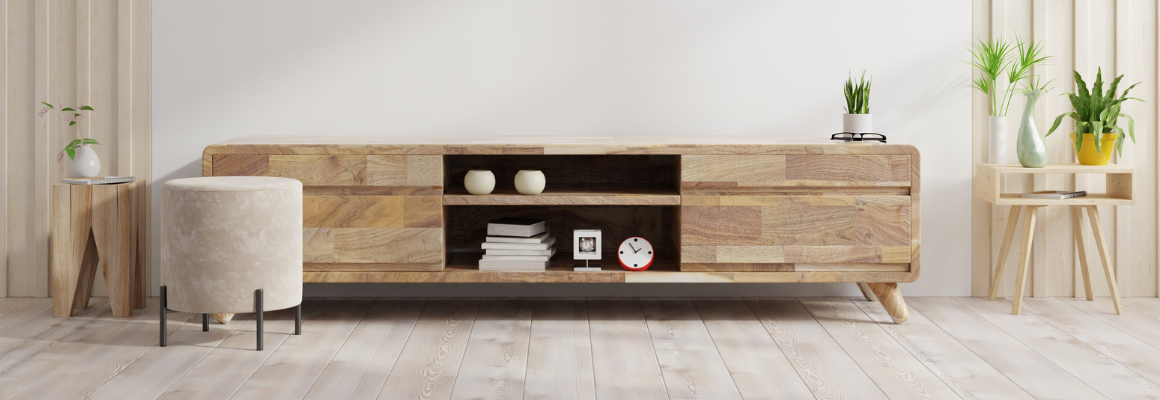Designing And Manufacturing Sustainable And Eco-Friendly Furniture
12 Apr. 2023As the world becomes increasingly aware of the environmental impact of industrial production, more and more consumers are seeking sustainable and eco-friendly products that will fit on delivery. The furniture industry is no exception. Designing furniture for sustainability has become a top priority for manufacturers and designers, as it can reduce waste, conserve resources and ultimately benefit the environment and our planet. Here are some important details that can help you integrate more sustainability into your furniture design.

Key Features Of Sustainable Furniture
When designing furniture to be eco-friendly, there are several considerations to keep in mind.
1. Materials
One of the most important aspects of sustainable furniture design is the choice of materials. Sustainable furniture should be made from renewable and nontoxic materials, such as natural wood, bamboo or recycled materials. Avoid using materials that are harmful to the environment, or that cannot be recycled, repaired or restored, such as those that include plastics or toxic chemicals.
There are several types of furniture that may not be worth manufacturing because the materials, once damaged, are typically beyond repair, leading to more waste. Here are a few examples.
• Particleboard Furniture: Particleboard is made from compressed wood particles, and it is not very durable. If particleboard furniture gets wet, it can swell and lose its structural integrity. Repairing particleboard furniture frames is typically not worth the effort and expense, as it may not last for very long, even after repairs.
• Mixed Materials: Materials that shrink and expand at different rates from humidity or temperature can cause cracks, warping, bubbling and clearly visible connection lines. This type of damage is often difficult to repair.
• Cast Concrete Furniture: Most chips and cracks in concrete are very difficult to repair, both structurally and cosmetically, so these often end up being disposed of when damaged.
2. Manufacturing
Look for manufacturers who use sustainable practices, such as recycling and reduced waste. Consider the carbon footprint of the manufacturing process, and choose manufacturers who use renewable energy sources or that are located close to the source of the materials.
3. Functionality
Sustainable furniture should be designed with functionality in mind. Choose designs that are durable, long-lasting and versatile. Avoid trendy or disposable furniture that will quickly go out of style or become unrepairable and end up in a landfill.
4. Packaging And Transportation
Finally, consider the packaging and transportation of your furniture. Look for manufacturers who use eco-friendly packaging materials and have a low-impact transportation strategy. Consider the environmental impact of shipping furniture long distances, and try to source materials and manufacturers locally whenever possible.
Challenges To Consider
One of the biggest challenges in designing sustainable furniture is balancing sustainability with cost and aesthetics. Sustainable materials and manufacturing processes can often be more expensive, and there is a perception that sustainable furniture is less stylish or modern than non-sustainable furniture. However, this perception is changing as more and more designers are incorporating sustainability into their designs.
To address this challenge, designers and manufacturers can focus on creating furniture that is both sustainable and aesthetically pleasing. One approach is to focus on creating timeless designs that will last for many years. This can generally be achieved through simple, elegant designs that are versatile and functional. Avoiding trends and fads can also help ensure that the furniture will be in style for many years to come.
Based on my experience in the furniture industry, I have noticed that items made from materials that are difficult to repair or restore are often disposed of—even before they are used. This includes items that are damaged during delivery, which end up going to waste when manufacturers don't accept them back. Such items should not be manufactured in the first place. This is one of the reasons I personally avoid furniture made from composite materials, plasters or concrete, as well as items with unusual colors or a super glossy finish, which are difficult or not cost-effective to restore and quickly become unnecessary.
When it comes to transportation, another consideration is the size of the furniture. Oversized furniture may not fit through doorways or elevators, which can create a significant challenge for consumers and businesses alike. In these situations, companies are often called upon to disassemble and assemble furniture on-site in order to make it fit. While this process can be helpful in some cases, it's important to keep in mind that it can also contribute to additional waste and environmental impact, especially when customers don't want to carry the additional expense of professional assembly and decide to dispose of the furniture instead. To address this issue, designers and manufacturers can focus on creating furniture that is designed to be easily transported and assembled. This might involve using modular designs that can be easily broken down and reassembled or choosing materials that are lightweight and easy to move.
Consumers want the companies they buy from to be more environmentally conscious and sustainable. By prioritizing long-lasting styles, quality of materials and ease of transport, designers and manufacturers can create stylish, practical furniture while also reducing waste and environmental impact.
Source Credits: Forbes




